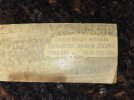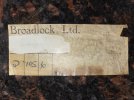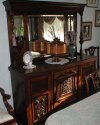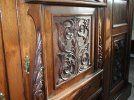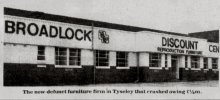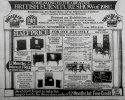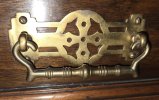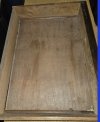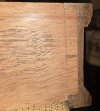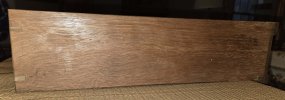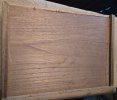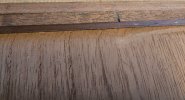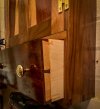We recently discovered a tag on an antique we bought in the USA, in 1990. It reads, "Manor Farm Road, Greet B'Ham England". There was a business name: "Broadlock Ltd."
Google maps shows Manor Farm Road in Greet, Birmingham is a very short street, almost entirely private homes. There are some automobile-related businesses on one end, a shop being renovated and another closing. Of course, 35 years ago it could have been quite different. Google also indicates that "Broadlock Ltd." was (is) a liquidation company.
But I'm interested in the origin of the piece. It's a heavily carved walnut sideboard. The base has cabinets for dishware. The top has a large mirror and some turned spindles holding up a crown molding. We always assumed it was from England, and now it's confirmed. We have also assumed it came from the 19th century, but it has undergone some repair work. I don't think Phillips Head screws were in use during the 19th C, but they might have come from a recent repair.
There are notes about a pub that was once on Manor Farm Road. An antique dealer probably would label items. Perhaps the sideboard came from the pub or a home-owner in a liquidation managed by Broadlock? Do the numbers reflect a price, or just a reference within Broadlock's files? Opinions on the age of the piece?
Google maps shows Manor Farm Road in Greet, Birmingham is a very short street, almost entirely private homes. There are some automobile-related businesses on one end, a shop being renovated and another closing. Of course, 35 years ago it could have been quite different. Google also indicates that "Broadlock Ltd." was (is) a liquidation company.
But I'm interested in the origin of the piece. It's a heavily carved walnut sideboard. The base has cabinets for dishware. The top has a large mirror and some turned spindles holding up a crown molding. We always assumed it was from England, and now it's confirmed. We have also assumed it came from the 19th century, but it has undergone some repair work. I don't think Phillips Head screws were in use during the 19th C, but they might have come from a recent repair.
There are notes about a pub that was once on Manor Farm Road. An antique dealer probably would label items. Perhaps the sideboard came from the pub or a home-owner in a liquidation managed by Broadlock? Do the numbers reflect a price, or just a reference within Broadlock's files? Opinions on the age of the piece?

